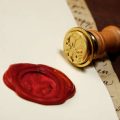Origins of Tarot: A Medieval Game
To understand the extraordinary journey of Tarot, one must first return to its earliest chapters amidst the grandeur and intrigue of medieval Europe. Long before Tarot became synonymous with divination and mysticism, its cards graced the hands of nobles and courtiers in Italy and France as part of an elaborate card game known as “trionfi” or triumphs. The earliest documented decks emerged in fifteenth-century Northern Italy, where they were commissioned by aristocratic families as lavishly illustrated playthings, reflecting both artistic sophistication and the social customs of the time. These early Tarot decks, often bespoke creations, bore allegorical images that mirrored the values and ideals of Renaissance society. As the game spread to France, it evolved into what was known as “tarot,” enjoyed in courtly circles as a sophisticated pastime. There was little hint then of the mystical connotations that would later envelop these cards; their purpose was amusement, strategy, and occasionally gentle rivalry among Europe’s elite. This historical context is crucial for appreciating how Tarot’s meanings have shifted across centuries—from a symbol of cultured leisure to a vessel for spiritual insight—shaped by the changing currents of culture and belief.
2. From Parlour to Paradox: Tarot’s Gradual Mystification
In the heart of Georgian and Victorian Britain, the Tarot found a new audience far removed from its continental origins as a simple parlour card game. While originally designed for entertainment and social amusement, Tarot decks began to acquire a reputation as objects of curiosity, eventually becoming enshrouded in layers of mystery. This transformation was neither sudden nor accidental; rather, it reflected broader shifts in cultural attitudes towards mysticism and the unknown.
The 18th and 19th centuries were marked by a burgeoning fascination with esotericism, spurred on by secret societies, occult philosophers, and an appetite for spiritual exploration amongst the British intelligentsia. As tea was poured and polite conversation flowed in drawing rooms across London and Edinburgh, Tarot cards started to feature not merely as pastimes but as gateways to hidden wisdom. The cards’ enigmatic images—once simply illustrations for gameplay—were now viewed as symbols loaded with arcane meaning.
Influences Shaping Tarot’s Mystical Reputation
| Influence | Description | Impact on Tarot |
|---|---|---|
| The Occult Revival | The late 18th-century resurgence of interest in alchemy, astrology, and Hermeticism. | Reframed Tarot as an ancient book of wisdom rather than just a deck of cards. |
| Freemasonry & Secret Societies | Organisations such as the Hermetic Order of the Golden Dawn promoted symbolic study. | Encouraged the reinterpretation of card imagery through esoteric lenses. |
| Romanticism | An artistic movement celebrating emotion, mystery, and the supernatural. | Popularised the idea of divination and personal destiny woven through the cards. |
This gradual mystification also saw the emergence of new methods for reading Tarot. No longer were players content with chance alone; instead, practitioners began to associate specific meanings with individual cards and their arrangements—known as spreads—believing that these could unveil secrets about one’s fate or character. By the close of the Victorian era, what had once been mere pastime had become paradox: a game transformed into an instrument of prophecy, shaped by both scholarly reinterpretation and popular imagination alike.
![]()
3. Tarot’s Arrival in Britain: Early Encounters and Adaptations
The story of Tarot’s introduction to the British Isles is one marked by curiosity, caution, and eventual transformation. As the cards crossed the Channel from continental Europe in the late eighteenth and early nineteenth centuries, they were met with a mixture of intrigue and scepticism. Unlike their earlier use as simple playing cards or tools for fortune-telling in France and Italy, the British encounter with Tarot was shaped by a unique cultural context—one that valued tradition, logic, and a certain reserve towards continental mysticism.
At first, Tarot was regarded with suspicion by the British public, who often associated it with foreign superstition or frivolous entertainment. The reserved nature of British society, coupled with its Protestant heritage, meant that anything perceived as occult or unorthodox faced resistance. Nevertheless, the allure of the unknown gradually piqued the interest of spiritual seekers and intellectuals alike. By the Victorian era, Britain was experiencing a renewed fascination with esotericism and ancient wisdom, setting fertile ground for Tarot’s acceptance.
It was within this climate that Tarot began to find its place in British spiritual life. The cards were no longer merely objects of play; they became tools for meditation, introspection, and divination among select circles. Secret societies such as the Hermetic Order of the Golden Dawn embraced Tarot as part of their ceremonial practices, imbuing the cards with new layers of mystical symbolism tailored to British sensibilities. This period saw Tarot transformed from a continental curiosity into an instrument resonant with the aspirations of those seeking deeper meaning amid rapid social change.
Gradually, Tarot readings became woven into both public and private life. Parlour games at Victorian gatherings evolved into more serious explorations of fate and character, while spiritualists incorporated Tarot into séances and personal rituals. In time, even those outside esoteric circles came to appreciate the Tarot’s evocative imagery as a means of storytelling and self-reflection—a subtle but profound adaptation within British culture.
Thus, Tarot’s journey through Britain reflects not only a geographic movement but also a transformation in purpose and perception. From initial scepticism to gradual integration, the cards adapted to local customs while retaining their enigmatic allure. Through this process, Tarot established itself as a significant—if sometimes discreet—thread in the tapestry of British spiritual and social life.
4. The British Occult Revival: Embracing Divination
As the nineteenth century unfolded, Britain witnessed a remarkable surge in interest towards mysticism and the occult arts. This era, often referred to as the British Occult Revival, signalled a profound transformation in the perception and use of Tarot cards. What had once been a parlour game for European nobility now became a revered instrument for spiritual exploration and divination.
The Role of Key Organisations
At the very heart of this revival stood secret societies and esoteric organisations determined to unlock ancient wisdom. Most notable among them was the Hermetic Order of the Golden Dawn, founded in London in 1888. Members of this influential society, including prominent figures like Arthur Edward Waite and Pamela Colman Smith, sought to codify mystical knowledge and integrate Tarot into broader magical practices. Their efforts not only systematised Tarot symbolism but also laid the foundation for many modern interpretations.
Major Influencers During the Revival
| Organisation/Figure | Contribution to Tarot |
|---|---|
| Hermetic Order of the Golden Dawn | Formalised Tarot rituals; developed new symbolic attributions linking Tarot with astrology, Kabbalah, and alchemy |
| A.E. Waite & P.C. Smith | Created the Rider-Waite-Smith deck, which popularised pictorial Minor Arcana and made Tarot accessible to a wider audience |
| Aleister Crowley (Ordo Templi Orientis) | Developed the Thoth Tarot deck, infusing it with his own philosophical insights and complex symbolism |
Cultural Impact on British Society
The British approach to Tarot during this period was marked by a characteristic blend of intellectual rigor and spiritual curiosity. Esoteric circles flourished in cities such as London, Edinburgh, and Manchester, where learned discussions often mingled with séances and ritual work. The language surrounding Tarot became distinctly British: references to “fortune-telling” gave way to “divinatory practice,” emphasising its role as a tool for introspection rather than mere amusement or superstition.
This shift in attitude not only elevated the status of Tarot within British culture but also set a precedent that would influence global perceptions for generations to come. The cards were no longer just objects of entertainment—they had become gateways to self-knowledge, inspired by both ancient tradition and contemporary innovation.
5. Vocabulary and Symbolism: Speaking the British Tarot
In the evolution of tarot from its continental origins to its adoption within the United Kingdom, language and symbolism have played a pivotal role in shaping the deck’s interpretation. British practitioners, steeped in their own linguistic heritage and cultural traditions, often infuse tarot readings with uniquely local expressions and imagery. For instance, where a continental deck might reference a “tower,” British decks or readers might evoke the image of an ancient abbey or a windswept castle ruin—icons deeply rooted in the nation’s history and landscape.
Moreover, certain card names and their associated meanings have undergone subtle shifts to resonate with British sensibilities. The “Page” becomes a “Knave” in some older British packs, drawing upon medieval English terminology. Likewise, the suit of Pentacles may be referred to as “Coins” or even “Sovereigns,” reflecting a distinctly British currency and economic context. Such choices are not arbitrary; they speak to a collective memory shaped by monarchies, trade empires, and centuries-old folk customs.
The imagery woven throughout modern British tarot decks frequently pays homage to local flora and fauna—the stately oak tree for endurance, the cunning fox for adaptability, or the robin as a messenger of hope during winter’s gloom. Landscapes depicted may recall the rolling Cotswolds or the misty fens of East Anglia, grounding each reading in the familiar rhythms of British life. Even colour palettes tend toward muted earth tones and greys, mirroring the often temperate climate.
Cultural references also surface in the use of proverbs or idioms during readings. Instead of generic advice, a reader might quote “Keep calm and carry on” when drawing Strength or suggest “It’s not cricket” to highlight injustice or unfair play revealed by the Seven of Swords. These phrases do more than decorate—they anchor the reading in everyday experience, making divination both accessible and relevant.
Finally, British tarot practice often reflects the nation’s characteristic reserve and understatement. Interpretations tend towards gentle guidance rather than dramatic pronouncements, echoing the understated wisdom found in classic literature from Austen to Dickens. This blend of traditional values with contemporary insight allows tarot to remain both timeless and timely within British society—a tool for reflection that honours its past while embracing present realities.
6. Contemporary Perspectives: Tarot in Modern British Society
Within the shifting landscapes of twenty-first century Britain, tarot has found renewed meaning and relevance. No longer confined to the parlours of Victorian mystics or the candle-lit tables of Romani fortune-tellers, tarot now sits comfortably alongside yoga studios, bookshops, online communities, and even academic discourse. The cards have become a mirror reflecting not only personal curiosity but also broader cultural dialogues about spirituality, creativity, and self-discovery.
The Balance Between Scepticism and Intrigue
It is fair to say that modern British attitudes towards tarot are a careful balancing act. On one side stands the proud legacy of rationalism and empiricism—a heritage shaped by Enlightenment thinkers and scientific pioneers. For some, tarot remains little more than an entertaining game or a relic of superstition. Yet, there is also a distinct air of intrigue that surrounds the cards; a willingness to suspend disbelief, if only for a moment, in search of insight or inspiration. The British sensibility often marries healthy scepticism with polite curiosity, allowing tarot to occupy a space where questions are valued as much as answers.
Personal Guidance and Reflection
Today’s seekers do not necessarily look to tarot for absolute predictions of fate. Instead, many Britons turn to the cards as tools for reflection and personal guidance. A spread may serve as the starting point for introspection—helping individuals untangle emotional knots, clarify intentions, or simply make sense of life’s uncertainties. Counsellors and therapists have even begun exploring tarot’s potential as an adjunct to talk therapy, appreciating its ability to unlock stories and emotions through evocative symbolism.
Cultural Expression and Creativity
Tarot’s imagery has long provided fertile ground for artists, writers, and musicians. In Britain today, creative practitioners continue this tradition by reimagining classic decks with contemporary themes—addressing issues from gender diversity to climate change. Tarot readings feature in performance art and immersive theatre; its archetypes inspire novels and poetry collections. The cards thus become both medium and muse—a way to explore identity, community, and shared narratives within a modern context.
A Living Tradition
In sum, tarot’s journey from medieval European card game to modern tool of divination is echoed in its contemporary reception across Britain: ever-evolving yet rooted in history. Whether approached with playful curiosity or earnest intention, the cards offer a unique bridge between tradition and innovation—inviting individuals to seek meaning while respecting the unknowable mysteries that still linger at the heart of human experience.


